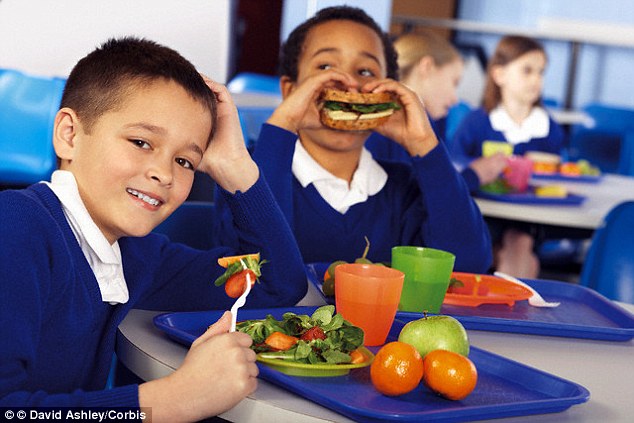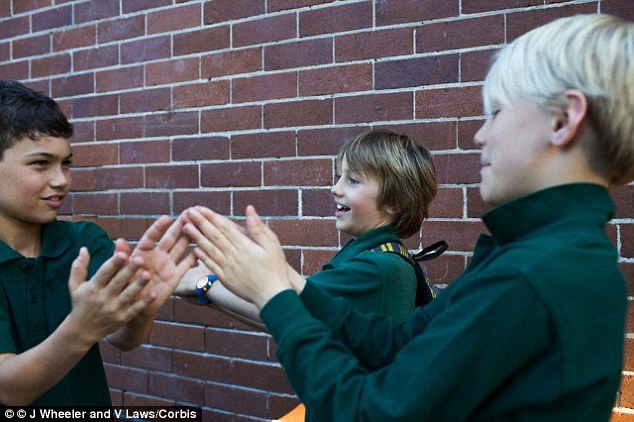The Secret to Getting Kids to Eat More Greens
They can make meal times a battle zone and cause endless tears and tantrums. But US researchers say they've found a simple way of getting students to eat more greens: allowing them out to play before lunch, rather than after.
A study found that when recess is held before lunch, children ate 54 per cent more fruit and vegetables. There was also a 45 per cent increase in students eating at least one serving of them. 'Recess is often held after lunch so children hurry to "finish" so that they can go play - this results in wasted fruits and vegetables,' one of the study's authors Dr David Just, of Cornell University, explains. 'However, we found that if recess is held before lunch, students come to lunch with healthy appetites and less urgency and are more likely to finish their fruits and vegetables.' As part of the new study, researchers studied seven schools in Orem, Utah. The pupils were in grades one to six, aged between six and 12 years old. Three schools switched their recess to before lunch, and four schools continued to hold recess after lunch. For four days in the spring of 2011 and nine days in the autumn of 2011 researchers measured how many fruits and vegetables were wasted. They did this by standing next to the bins at schools and recording the number of servings of fruit and vegetables that each student consumed or threw away. They also measured whether or not each student ate at least one serving of fruits or vegetables. After analysing a total of 22,939 observations the researchers concluded that in the schools that switched recess to before lunch children ate 54 per cent more fruits and vegetables. There was also a 45 per cent increase in those eating at least one serving of fruits and vegetables. During the same time period consumption of fruits and vegetables actually decreased in the schools that didn't switch the time of their recess. The researchers said that not getting a full, balanced meal can leave children feeling hungry during the rest of the school day, meaning they may not perform as well academically. They may also snack excessively when they get home from school. 'Increased fruit and vegetable consumption in young children can have positive long term health effects,' they said. They added that decreasing waste of fruits and vegetables is important for schools and districts that are faced with high costs of offering healthier food choices. In the UK, children aged four to six who attend state private schools are entitled to receive a free piece of fruit or vegetable each school day. In the U.S. 100,000 public and non-profit private schools take part in the National School Lunch program, one of whose aims was to increase the increases the availability of fruits, vegetables, and whole grains.
As part of the program, students are required to select a fruit and a vegetable side every day, but many are left or thrown away. Increasing fruit and vegetable consumption would make the program more successful, because it reduces waste, the researchers said. The researchers concluded that every school should make the switch, as moving recess is a no-cost way to make children healthier and make the school meal program more successful. Studies have shown eating vegetables are a good source of vitamins, minerals and fibre, and can prevent heart disease, stroke and some cancers. A 2008 study published in the Journal of School Health also found that children with healthy diets, including high consumption of fruits and vegetables, performed better on academic tests than children who ate fewer fruits and vegetables. The children with healthy diets were up to 41 percent less likely to fail literacy tests than the other children. The research was published in the journal Preventive Medicine. Written By Malden Davies Retrieved From:
|
|














